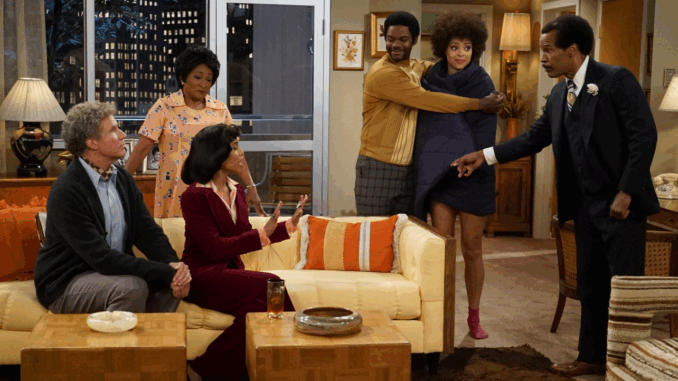
When people think of The Jeffersons, they often recall witty banter, iconic theme music, and bold social commentary wrapped in sitcom laughs. But few know the explosive, behind-the-scenes stories that added real tension—and real magic—to one of TV’s most groundbreaking shows.
For starters, Sherman Hemsley, who played the unforgettable George Jefferson, almost didn’t take the role. He was committed to a Broadway run of Purlie and initially declined. Producer Norman Lear, recognizing the spark Hemsley brought to the character, waited six months for him to finish his theater obligations—a rare and risky move in the fast-paced world of television production.
Then there’s Isabel Sanford, who played Louise “Weezy” Jefferson. Although their on-screen chemistry was iconic, Sanford and Hemsley barely spoke off camera. “We weren’t close friends,” Sanford admitted years later, “but we had this strange energy together that just worked.” That friction? It may have helped shape the biting, hilarious marital spats fans came to love.

But the most shocking revelation might be how The Jeffersons ended—not with a grand finale, not even with a goodbye. In 1985, after 11 seasons and 253 episodes, CBS canceled the show without warning. The cast and crew found out not from a producer or executive… but through the press. There was no final wrap party, no send-off, no closure—just a sudden end for a show that had become a cultural force.
The series also pushed boundaries on-screen. Episodes tackled racism, classism, alcoholism, and even same-sex relationships—decades before mainstream TV was ready. Some episodes sparked controversy; others were almost pulled from broadcast altogether.
And yet, The Jeffersons thrived. It was the first sitcom to center on a wealthy Black family in America, and its success helped pave the way for shows like The Fresh Prince of Bel-Air, Black-ish, and more. But behind the scenes? The journey was anything but smooth.
Nearly 50 years later, fans are still uncovering the truths that made The Jeffersons not just revolutionary, but also deeply human. Sometimes, the best stories aren’t in the script—but in the tension, passion, and perseverance behind the camera.
